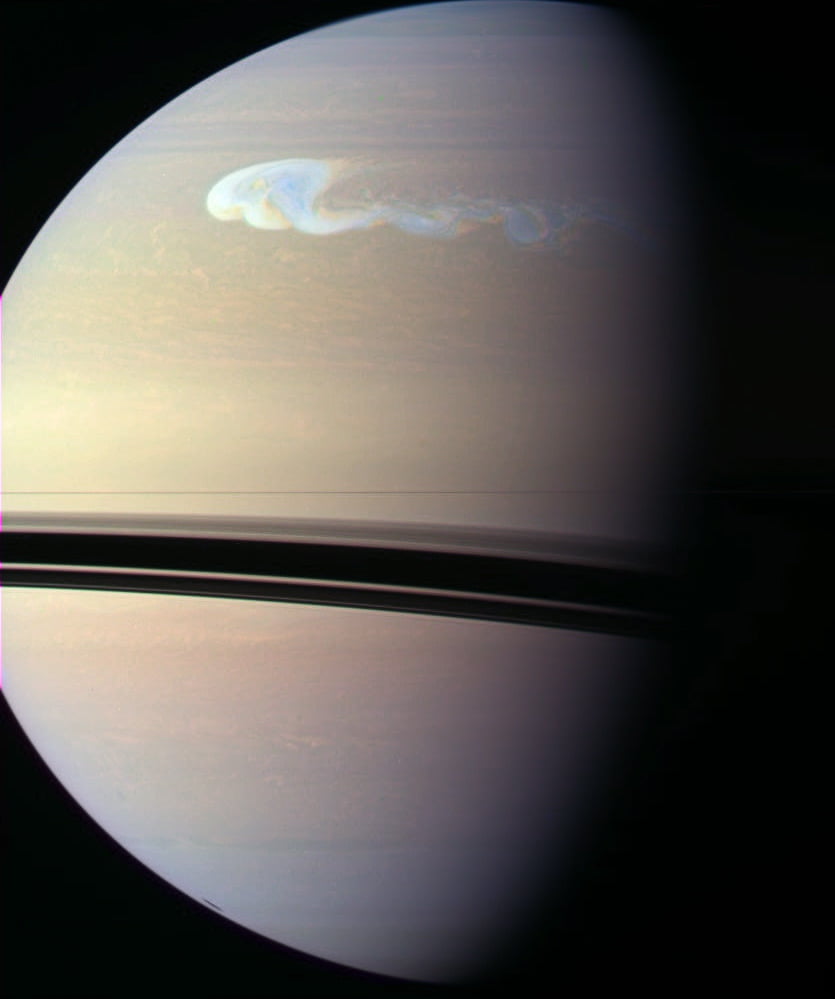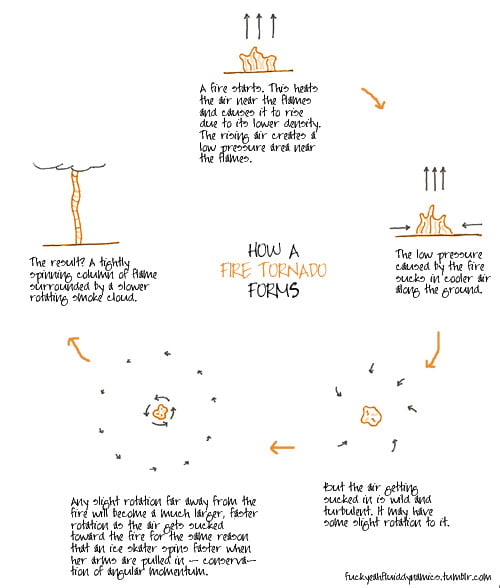Cloud streets–long rows of counter-rotating air parallel to the ground in the planetary boundary layer–are thought to form as a result of cold air blowing over warm waters while caught beneath a warmer layer of air, a temperature inversion. As moisture evaporates from the warmer water, it creates thermal updrafts that rise through the atmosphere until they hit the temperature inversion. With nowhere to go, the warmer air tends to lose its heat to the surroundings and sink back down, creating a roll-like convective cell. (Photo credits: NASA Terra, NASA Aqua, and Tatiana Gerus)
Tag: weather

Hurricane Irene
This August 25th satellite image shows Hurricane Irene over the Bahamas and Florida. Hurricanes are fueled largely by the release of heat as warm water vapor in the rising air condenses. The hurricane requires a body of warm water to sustain the process, which is why hurricanes weaken drastically after they make landfall. Over open water, the heat released by condensation fuels higher winds, which lowers the pressure at the center of the system and helps increase the rate of evaporation near the ocean surface, providing additional warm vapor for future condensation. See more photos of Irene from space, along with video from the ISS. #

Cloud Ocean
Time-lapse photography is great for capturing the fluid motion of clouds over the course of a day.
Tornado-Force Winds in a Wind Tunnel
[original media no longer available]
In order to demonstrate the effects of tornado-force winds, Fox News sent a reporter inside a wind tunnel and subjected him to 100 mph winds. Of course, actual measured winds in the recent storms topped 200 mph and four times the dynamic pressures the reporter experiences here. (via jerrodh)

Saturnian Storm
Back in mid-December, amateur astronomers discovered an enormous new storm on Saturn. The Cassini spacecraft captured this image early in the storm’s history (it now stretches farther around the planet). The fluid dynamics of Saturn’s atmosphere are incredibly complex and well beyond our current understanding, but we can certainly appreciate the majesty of a swirling, turbulent storm half the size of our entire planet. (via APOD, Martian Chronicles)

Airplanes Creating Snow
Scientists now think that that airplanes may be responsible for increasing local snowfall by flash-freezing supercooled water vapor in clouds. Water droplets can persist in the atmosphere to temperatures of -42 degrees Celsius. But when an airplane’s wing passes through moist air, the acceleration of the air passing over the wing causes a pressure decrease that can drop the temperature by as much as 19 C, causing the water droplets to form ice crystals immediately. (The particulate matter in the aircraft exhaust probably also aids this process.) The same behavior can also create holes in clouds and cause ice to form on the wings. # (Related behavior: vapor cones)
Photo credit: lhoon

Steam Devils
The formation of the ethereal steam devil is quite similar to the formation of a fire tornado. In this case, the first frost of the season cooled air temperatures substantially below the temperature of the water of the lake, creating conditions for steam and for updrafts of rising, warmer air. A slight breeze across the lake is enough to create pockets of vorticity, which stretch due to the updrafts and intensify due to conservation of angular momentum. This creates the narrow spinning vortex filaments that pull steam up and dance across the lake’s surface. #

Fire Tornado Formation
The phenomenon of a fire tornado caught our attention recently after the BBC published footage of one in Brazil. While it may look like the fiery wrath of a god, the fluid dynamics of a fire tornado are relatively simple (see figure above). Still, they make for some pretty wild video.







